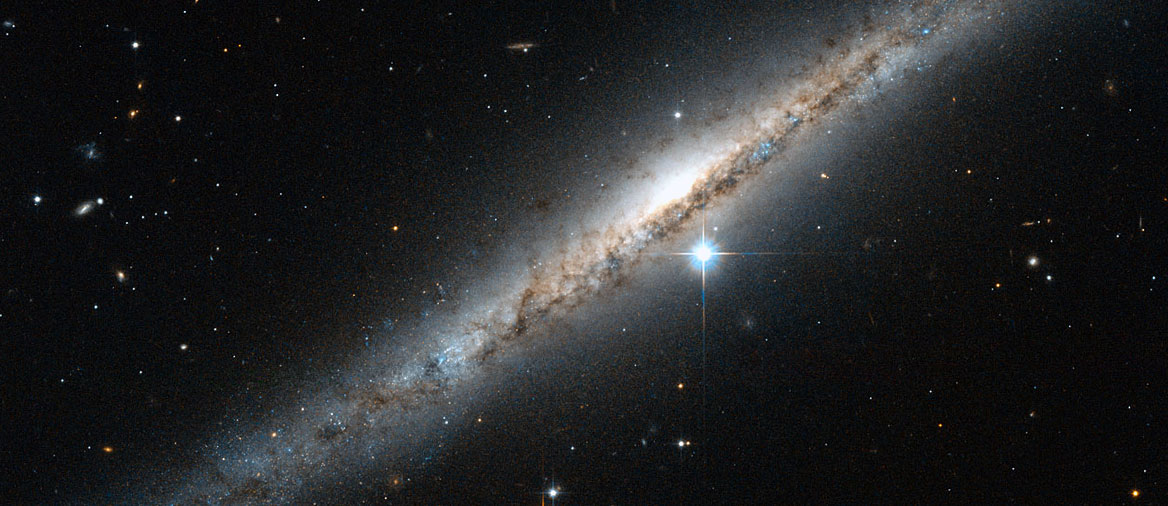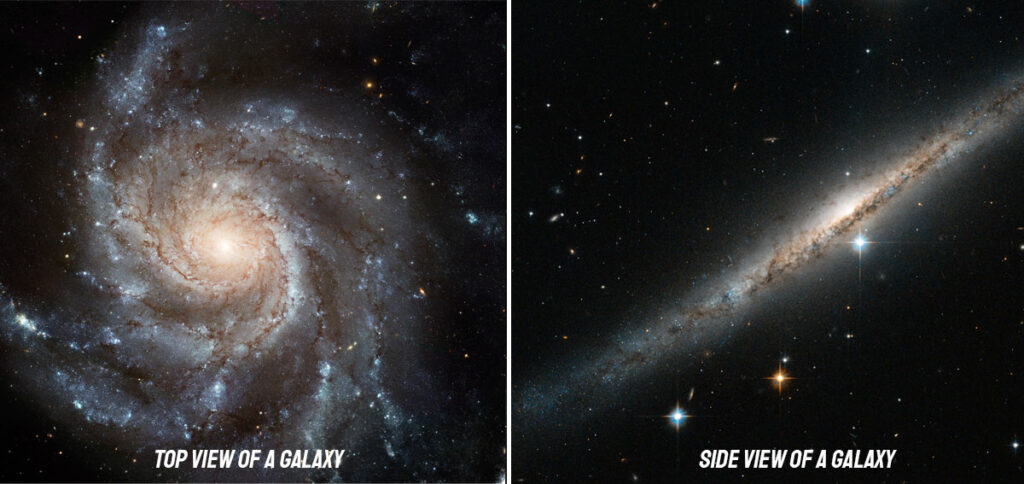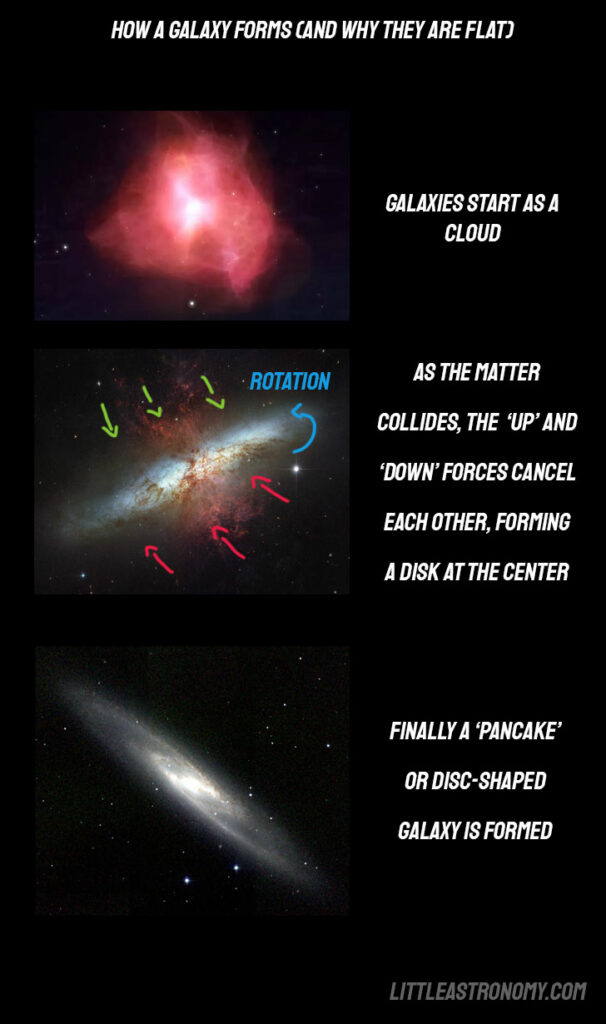When we picture the way objects organize around a center of gravity, we tend to imagine the shape of an atom, with the smaller objects orbiting around the nucleus forming a sphere around it. Planets, meteors, and other objects also tend to form a spherical shape.
So how come galaxies are flat and look like a disk instead of a sphere?.
Galaxies are flat because of rotation. Remember that pretty much every object in the universe is in constant movement. This includes black holes, which just like stars, are rotating around their own axis and also have a trajectory, sometimes, they are orbiting other black holes or galaxies, or they might be simply wandering aimlessly across the universe.
So to understand better why galaxies are flat, let’s start at the beginning.
What is a Galaxy
A galaxy is a system of star systems, stars. gas, planets, and other objects swirling around a black hole located at the center. A galaxy is very similar to a Solar system in the sense that it is a group of objects bound by gravity to a more massive object.
We will not get too much into the details of how a black hole is created because that’s a whole different article, but when a new galaxy forms after the creation of a black hole, it starts like a gigantic cloud of hot gas, rocks and ice.
Galaxies can take different shapes as they evolve. Some organize in the shape of a spiral, others have an elliptical shape, and a few rare ones group up as a ring around their black hole. But no matter what shape they take, they all end up becoming flat when looked at “from the side”. To picture this, think of galaxies like being in the shape of a pancake. The thickness of the pancake would be the area that is formed around the center of rotation, and if you look at it from the top, it looks like a circle.
Why Galaxies are flat
To explain how galaxies end up flat, let’s start from the beginning at the point they are formed and go forward from there.
Before a galaxy is created, you need a huge cloud of gas and rock clumped relatively close. Thanks to gravity, all this matter starts to clump together until a galaxy’s core is created at the center in the form of a supermassive black hole.
The matter in this cloud will move chaotically in every direction at the start, but as time goes on, it will start to rotate in the same direction as its black hole. Smaller groups of gas and rock will start to collide with each other forming stars and star systems.
If you take the center of rotation as your point of reference, some of this matter will accumulate around it, and in these early stages, some will still be moving “up” and “down”.
As millions of years pass, the matter will keep crashing and forming bigger objects whose gravity will attract more and more pieces.
If you remember your high school physics classes, you will know that when all the “up” and “down” collisions happen, those forces will cancel each other out, which means now all those newly formed objects created by the collisions will and will end up lined up around the center of rotation of the galaxy. Due to conservation of momentum, they will keep moving in the same direction as the reast of the galaxy, but they will not move much in other directions.
The difference with planets and other spherical objects
Galaxies do not end up in a spherical shape like planets because the distance between the center and the arms keeps the objects in a certain balance where the stars are orbiting or swirling around the black hole, but they are not being completely brought into the core.
Some galaxies with big enough black holes will eventually end up being consumed by it, but that process cna take hundreds or thousands of millions of years. So, while that happens, the galaxies will still have keep pancake-like shape.
Elliptical (spherical) galaxies
It is worth noting that there are some exceptions to these rules. Elliptical galaxies are a type of galaxy that looks a bit more spherical.
This generally occurs when the galaxy has a low angular momentum in its rotation and contains stars of lower mass. Thanks to these conditions, these galaxies are a bit more sparse.
Elliptical galaxies represent around 10% of all the galaxies in the observable universe.
Summary
- Galaxies rotate in the same direction as their core/black hole
- As galaxies form, the collisions of objects with each other cancel their momentum in all directions except for the direction of the rotation.
- The stars line up around the center of rotation, creating the flat, or pancake-like shape.
Enjoyed this article?
Get daily 10-minute PDFs about astronomy to read before bed!
Sign up for our upcoming micro-learning service where you will learn something new about space and beyond every day while winding down.









